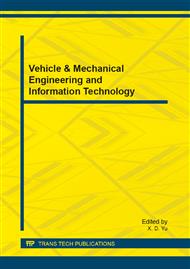[1]
R. Uzsoy, C.Y. Lee, and L.A. Martin-Vega, A review of production planning and scheduling models in the semiconductor industry, Part I: System characteristics, performance evaluation and production planning, IIE Transactions, vol. 24, p.47–60, (1992).
DOI: 10.1080/07408179208964233
Google Scholar
[2]
R. Uzsoy, C.Y. Lee, and L.A. Martin-Vega, A review of production planning and scheduling models in the semiconductor industry, Part II: Shop-floor control-floor control, IIE Transactions, vol. 26, p.44–55, (1994).
DOI: 10.1080/07408179408966627
Google Scholar
[3]
J. N. D. Gupta, R. Ruiz, J. W. Fowler, and S. J. Mason, Operational planning and control of semiconductor wafer production, Production Planning and Control, vol. 17, p.639–647, (2006).
DOI: 10.1080/09537280600900733
Google Scholar
[4]
R. C. Leachman, and T. F. Carmon, On Capacity Modeling for Production Planning with Alternative Machines, IIE Transactions, vol. 24, p.62–72, (1992).
DOI: 10.1080/07408179208964234
Google Scholar
[5]
S. H. Choi, M. W. Park, D. H. Lee, K. C. Jeong, S. K. Lim, J. G. Kim, and G. C. Lee, A Conceptual Framework of an Advanced Planning and Scheduling System for Printed Circuit Board Manufacturing Lines, Asia Pacific Management Review, vol. 11, p.133–139, (2006).
Google Scholar
[6]
M. H. Kim, and Y. D. Kim, Simulation-based real-time scheduling mechanism in a flexible manufacturing system, Journal of Manufacturing Systems, vol. 13, p.85–93, (1994).
DOI: 10.1016/0278-6125(94)90024-8
Google Scholar
[7]
K. C. Jeong, and Y. D. Kim, A real time scheduling mechanism for a flexible manufacturing systems: Using simulation and dispatching rules, International Journal of Production Research, vol. 36, p.2609–2626, (1998).
DOI: 10.1080/002075498192733
Google Scholar
[8]
Y. D. Kim, S. O. Shim, B. Choi, and H. Hwang, Simplification Methods for Accelerating Simulation-Based Real-Time Scheduling in a Semiconductor Wafer Fabrication Facility, IEEE Transactions on Semiconductor Manufacturing, vol. 16, p.290–298, (2003).
DOI: 10.1109/tsm.2003.811890
Google Scholar
[9]
G. C. Lee, Heuristics for line balancing in hybrid flowshop, Journal of the Society of Korea Industrial and Systems Engineering, vol. 30, p.93–101, (2007).
Google Scholar
[10]
K. M. Marilyn, Order Promising and the Master Production Schedule, Decision Sciences, vol. 19, p.858–879, (1988).
DOI: 10.1111/j.1540-5915.1988.tb00308.x
Google Scholar
[11]
V. Gordon, J. M. Proth, and C. Chu, A survey of the state-of-the-art of common due date assignment and scheduling research, European Journal of Operational Research, vol. 139, pp.1-25, (2002).
DOI: 10.1016/s0377-2217(01)00181-3
Google Scholar


